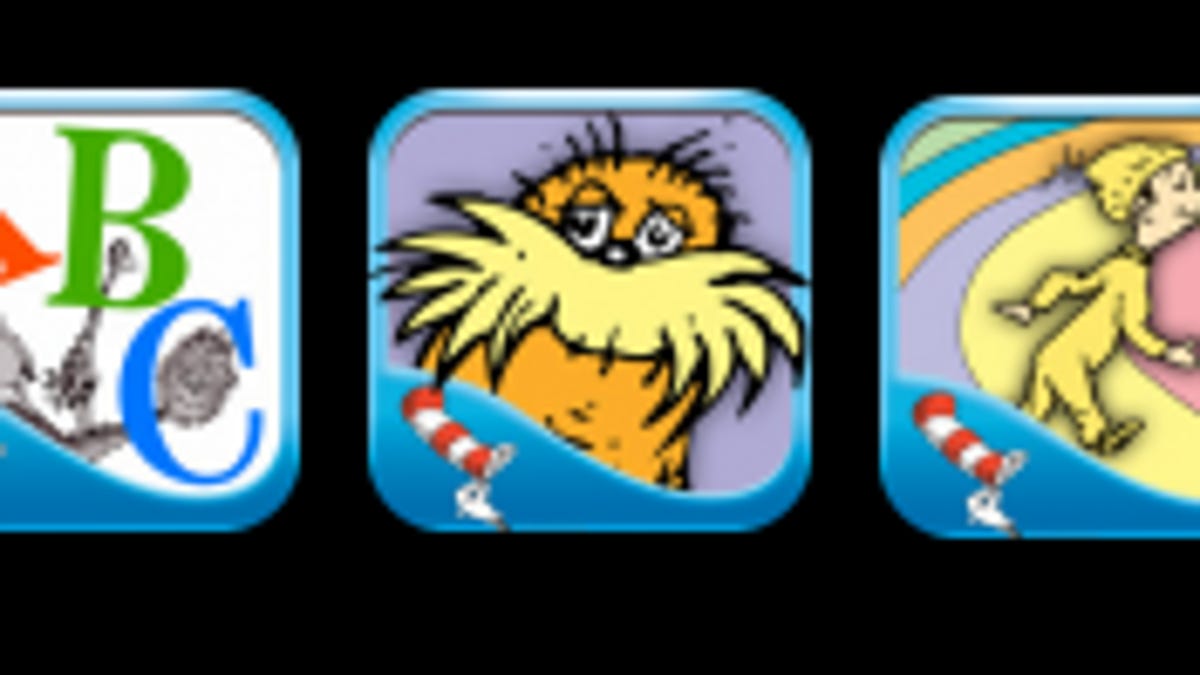How Dr. Seuss titles make it to the App Store
Find out how one development house is turning the classic children's stories into interactive applications for Apple's iPhone and iPad.

Growing up in the U.S. and many other parts of the world, it's hard to not run across at least one of the Dr. Seuss books. Among the annals of children's literature, the late Theodor Seuss Geisel created a wealth of titles that are instantly recognizable for their colorful characters, and even more colorful worlds.
So it's no surprise these titles would one day make their way onto portable, digital reading devices. The only problem, though, is that gadgets like the Kindle, Nook and Sony's Reader, shipped with grayscale screens--a technology that is decidedly ill-fitting of Geisel's colorful works. (Note: the Nook ships with a color touch screen, but it's not used for reading).
The solution from Oceanhouse Media, which acquired the digital publishing rights for the Dr. Seuss series less than a year ago, was to turn to Apple's iPhone and iPad. The company had already put out a number of iOS self-help book apps for publisher Hay House, and was able to sway Dr. Seuss Enterprises to take a chance on bringing the series to that platform by using the company's book reading engine as an example of what could be done.
That engine was one of seven the company has built from scratch, and something Oceanhouse's development director Greg Uhler last week told CNET has been designed specifically around the Dr. Seuss content. "We looked at the physical product, and what interactive features might it need," he explained. "We started not with a 'What can we do from the technology perspective?' but 'What should be done?' 'How did Geisel write these books,' and 'How did he design them?'"
The answer was to create a reading interface that could be adapted not only by what device a reader was using, but also what his or her reading level was. When the company first started out, it only had two of these reading modes: the "read to me" mode, which was designed for children who are learning to read, both reads and highlights on-screen text whenever pages are turned; and the "read it myself" mode, which nixes both these features in favor of acting like a normal, page-turning eBook.
Because of the popularity of the Seuss series, the company later added auto-play, which Uhler affectionately called "toddler mode." This goes through the book as if it were a video: reading the words out loud, turning pages, and activating embedded sound effects and animations. "You can't exit the app unintentionally when this mode is running," Uhler explained. "You just let it play."
Both auto-play, and the other two more standard reading modes split up the Dr. Seuss page art into sections. It begins by showing the whole page, then zooming into specific sections in order so that users don't miss the detail. Similar to what Marvel and DC have done on their comic book reading iOS apps, this requires that an artist goes through and scripts out the order of the sections on a per title basis:
To get the source content on there in the first place, Oceanhouse starts with print-ready digital artwork from Dr. Seuss Enterprises. The company then sizes it, along with the text for what device it will end up on. "For the iPhone 3GS, or iPods it's the native resolution. For iPhone 4 and iPad it's the highest resolution," Uhler explained. Each app contains all three of these assets in a universal application, so that users need only buy one copy that will work on all the different devices.
To date, Oceanhouse has put out seven of the Dr. Seuss titles, and is in the process of bringing all 44 works to the iOS platform, alongside interactive games like what it did last December with the release of "The Grinch Who Stole Christmas," as well as for "The Lorax" and "One Fish, Two Fish, Red Fish, Blue Fish." The company's next efforts will be a digital version of "Green Eggs and Ham" and "Gertrude McFuzz."

